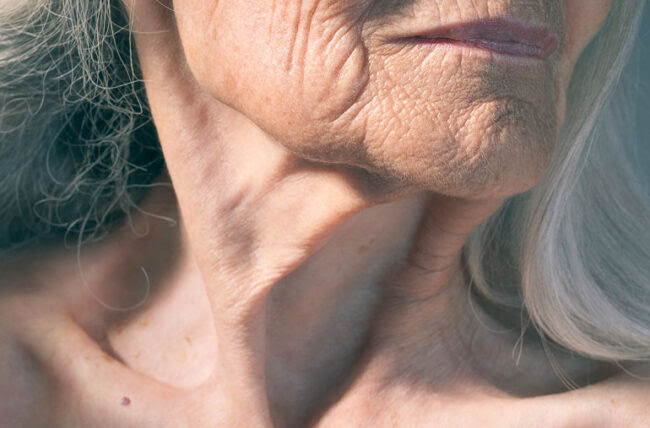Conditions
How To Get Rid of 'Turkey Neck'?
Lifestyle changes, neck exercises, injections and surgery can all help improve turkey neck
Your nana's sagging jawline has made an unwelcome appearance on your face. What's started as a little softness under your chin has become a full-fledged gobbler. Turkey Neck' is a problem with your neck's skin, fat or underlying muscle, or a combination of the three. It's often a sign of aging, but younger people can experience it, too. There are many ways to address it, depending on the cause and what kind of results you want.
"Turkey neck" may not be an official medical term, but people know it when they see it.
"Patients are dissatisfied with the appearance of their profile or the front view of their face because of excess skin, soft tissue and lax neck muscles,"
What causes a turkey neck?
Aging: Your skin naturally loses elasticity as you get older. "Gravity takes over, and the skin on your cheeks starts to drift down,
Weight: Weight gain can cause extra fat to collect around your neck.
Genetics: "I hear, 'I have my mother's neck' or 'I have my father's jaw,' all the time,"
"Your inherited bone structure or anatomy affects whether you carry extra neck tissue or are prone to collect excess fat around your neck."
Lifestyle factors: Environmental toxins, smoking, sun damage and a poor diet can all eat affect your skin's elasticity, too.
Medications: Certain medications can cause overall weight gain or fat to be more concentrated in certain areas of your body, including your neck. "There's a phenomenon called HIV lipodystrophy, where some anti-HIV medications cause fat to collect in your neck and other areas of your body,
Weak neck muscles: You have two platysma muscles on the front of your neck. "These muscles can weaken or separate over time, affecting your neck's appearance,"
How to get rid of turkey neck
Choosing an effective turkey neck treatment depends on what's causing it and your goals. Fortunately, there's a smorgasbord of treatment options available
Weight loss
some people note a change in the appearance of their neck when they lose weight - but not always. It depends on the character and quality of your skin.
Many products and minimally invasive procedures can help improve your skin's elasticity and the appearance of neck fat, including:
An anti-aging skin care routine, including neck creams and lotions can help minimize collagen loss and tighten your skin.
Laser skin resurfacing uses heat to rejuvenate your skin.
Ultherapy uses focused ultrasound to lift and tighten your skin.
Microneedling uses tiny needles to stimulate your skin to repair itself.
Radiofrequency microneedling uses radiofrequency energy to help collagen grow and tighten your skin.
Other, more potent options include:
Deoxycholic acid, or Kybella injections, which help dissolve neck fat.
Fat freezing and nonsurgical body sculpting, such as CoolSculpting, and devices that use laser, radiofrequency or ultrasound energy to destroy fat cells
Radiesse and RF microneedling is one of the most effective treatment which would last for over 2 years.The results of this particular treatment are very impressive.
To improve your neck's underlying muscle quality and tone, you can try:
Turkey neck exercises: Daily neck exercises can strengthen neck muscles, which may help improve your neck's appearance. For ideas on moves you can try, ask a dermatologist.
Botox for turkey neck: As the platysma muscles weaken, vertical bands or cords can appear on your neck. "The muscles become tight and enlarged,"
Facelifts and neck lifts
Surgeries that treat turkey necks include facelifts (rhytidectomy) and neck lifts (platysmaplasty). During these procedures, plastic surgeons remove excess face or neck skin and fat while tightening the skin, muscle and tissue left behind.
Facelifts and neck lifts go by many aliases, depending on who's doing them and how. "Feather lift, short scar, J lift - essentially, they're all one form of facelift/neck lift or another,"


